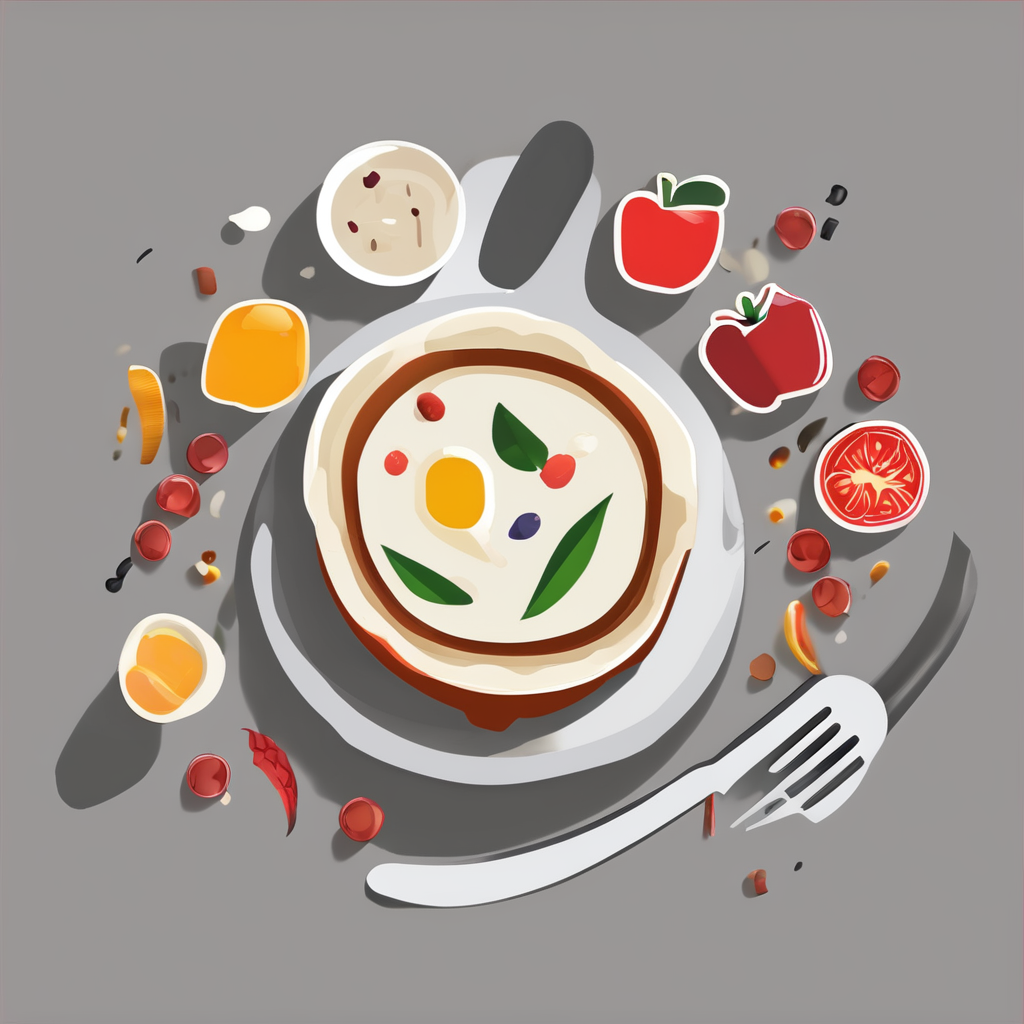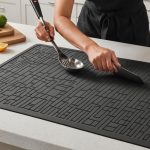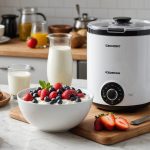Effective Fridge Organization
Organizing your fridge space efficiently is crucial for maintaining optimal visibility and access. This effort can not only streamline your daily meals but also support healthier eating habits. Start by designating specific zones for different food categories like fruits, vegetables, proteins, and leftovers. This separation ensures that each type of food is easily accessible, minimizing waste.
Food storage involves strategic placement. Fruits and vegetables often do best in the crisper drawers where humidity can be controlled. Proteins, on the other hand, benefit from placement on the lowest shelf, which is typically the coldest part of the fridge. Leftovers are best kept in eye-level spots to encourage consumption before spoilage.
Have you seen this : Transforming your cooking experience: the impact of kitchen mat texture and color on comfort and fatigue relief
Labeling and using containers can revolutionize the way you manage your fridge’s contents. By using transparent boxes, you can easily see what’s inside, reducing food waste. Labels that include the date of storage can also mitigate the risks of eating expired foods.
Remember these simple tips:
This might interest you : Transform your kitchen with a yogurt maker: enjoy guilt-free indulgence and health benefits!
- Use airtight containers to maintain food freshness.
- Rotate items based on their expiration.
- Regularly declutter to maintain storage efficiency.
Adopting these practices not only enhances your food storage but also promotes a healthier, more organized lifestyle.
Healthy Food Selection
Creating a strategy for grocery shopping that focuses on nutritious choices can significantly improve your diet. When selecting healthy foods, it’s crucial to identify nutrient-dense options to include in your weekly groceries. Nutrient-dense foods are those rich in vitamins, minerals, and other essential nutrients required for good health and provide these benefits without excess calories. Examples include whole grains, lean proteins, nuts, seeds, and leafy greens.
Understanding food labels is key to making healthful options. Pay attention to serving sizes, calorie counts, and the list of ingredients. Look for foods low in added sugars and sodium and high in dietary fiber and protein. Observing labels helps you avoid foods with unnecessary additives or high in unhealthy fats.
Incorporating seasonal fruits and vegetables into your diet can enhance both taste and nutrition. Seasonal produce often tastes better and can be more affordable. For instance, summer brings an array of berries rich in antioxidants, while autumn offers squash and pumpkins high in vitamins A and C. By focusing on such dynamic produce, you ensure a varied and delicious diet full of essential nutrients.
Meal Preparation Strategies
Effective meal prep can transform your culinary routine, making your kitchen adventures more efficient and enjoyable. By planning meals for the week, you can minimise last-minute choices that often lead to stress and unhealthy eating habits. Consider setting aside time each week to map out breakfast, lunch, and dinner. This proactive approach keeps you organised and on track.
Batch cooking is one of the most valuable time-saving techniques available. By cooking large quantities of staple foods like rice, pasta, or proteins, you can save time during the week. After cooking, portion these into meal-sized containers. This not only simplifies meal times but also helps maintain control over portion sizes.
Incorporating leftovers into new meals not only reduces waste but also adds creativity to your culinary journey. A simple example: transform yesterday’s roast chicken into a delectable chicken salad or a stir-fry the following day. This strategy not only makes mealtime exciting but maximises the use of every ingredient.
Implementing these strategic cooking tips not only saves time but also positively impacts health and budget. Embrace meal prep and these savvy techniques to enjoy better meals and more leisure time.
Understanding Portion Control
Recognizing the right portion sizes is crucial for developing and maintaining healthy habits. Visual cues can be an effective method for gauging these sizes. For instance, a serving of protein like chicken or fish should resemble the size of a deck of cards, while a carbohydrate serving akin to a tennis ball may suffice. Such visual aids simplify the process of ensuring appropriate serving suggestions without constant measuring.
When measuring portions to prevent overeating, precision is key. Kitchen tools like measuring cups or scales can assist in achieving the correct portion sizes. Begin by portioning food into bowls or plates before eating, helping to control the amount consumed. Over time, these tools hone your ability to estimate portion sizes more accurately and naturally.
Engaging in mindful eating plays a significant role in weight management. By focusing on the taste, texture, and aroma of food, individuals can develop a greater awareness of hunger cues, thus preventing overeating. This practice involves slowing down during meals, savouring each bite, and recognising the body’s signals of fullness, which ultimately leads to more balanced eating choices and sustained healthy habits.
Reducing Food Waste
Addressing food waste is a pivotal step towards achieving greater sustainability in our daily lives. One simple yet effective method is to implement strategies for tracking expiration dates and assessing food freshness. Invigorate your fridge management by organising items systematically and labelling them with their purchase or expiration dates. This way, you can prioritise their usage, consuming items before they spoil.
Another creative way to tackle food waste is by making the most of leftover ingredients. Transform last night’s dinner remnants into new culinary creations. For instance, incorporate spare vegetables into hearty soups or vibrant stir-fries. Repurpose stale bread into delightful crumbs or luscious bread pudding. This practice not only minimises waste but also fosters responsible eating habits that maximise the value of every ingredient.
Moreover, the significance of grocery lists cannot be overstated when it comes to preventing overbuying, a common culprit of food spoilage. A curated list streamlines shopping, ensuring that you purchase only what is necessary. Align your list with planned meals to avoid superfluous items that may end up uneaten. Through these thoughtful practices, individuals can make substantial contributions towards environmental conservation and sustainable living.
Health-Oriented Recipes
Creating delicious and nutritious meals can be simple and rewarding. Here’s a look into some delightful cooking ideas that promote a healthier lifestyle.
Quick and Nutritious Breakfast Ideas
For a swift start to the day, consider healthy recipes such as overnight oats topped with fresh fruit or a smoothie packed with spinach, banana, and almond butter. These cooking ideas are both convenient and fuel your morning with vital nutrients.
Healthy Lunch Options to Prepare Ahead
Batch-cooking nutritious meals like quinoa salads or roasted vegetable wraps offer a wholesome midday meal that can be conveniently prepped in advance. Storing portions in glass containers keeps them fresh while maintaining their flavor.
Dinner Recipes Focusing on Balanced Nutrition
Dinner can be a rich source of nutritious meals with recipes focused on balanced nutrition, such as grilled salmon paired with steamed broccoli and quinoa. Incorporate diverse food groups for a satisfying and healthful dinner.
- Simple snack recipes that promote better eating habits
- Tips for incorporating more vegetables into meals
- Easy substitutions for healthier cooking
These cooking ideas are designed to seamlessly fit into busy lifestyles while prioritising health. By experimenting with these recipes, you can enjoy meals that are as nourishing as they are satisfying.
Visual Aids and Resources
To enhance your meal planning, leveraging resources like apps and tools is crucial. Leading apps for efficient meal planning not only simplify the process but also save time and reduce stress. MyFitnessPal and Mealime are excellent choices. They provide customised meal plans and grocery lists, making meal preparation seamless.
For a more organisational approach, consider printable checklists for fridge organisation and grocery shopping. These checklists help in maintaining an organised kitchen, ensuring that everything is easily accessible when meal prepping. Moreover, an organised grocery checklist ensures you get all necessary ingredients, reducing the chances of impulse buying.
Engaging infographics can play a pivotal role in understanding portion sizes and proper food storage. Infographics often present visual cues, aiding in remembering the essential details of portion control. For food storage, a quick glance at an infographic can remind you of how long various foods can be safely stored in the freezer or pantry.
Incorporating these meal planning tools and visual aids into your routine not only streamlines the process but also empowers you to make healthier choices confidently.











